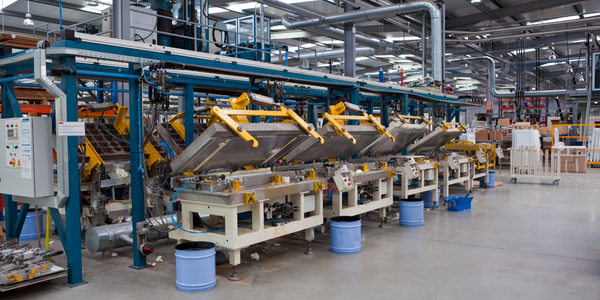Use Cases
- Personnel Tracking & Monitoring
- Time Sensitive Networking
Services
- System Integration
About The Customer
Fitzsimons Temple Bar is a renowned party venue located in Dublin's Temple Bar district. The venue offers a variety of experiences across its five floors, including multiple bars, live music, a rooftop garden with stunning views over Temple Bar, and a weekend nightclub. Open late seven nights a week, Fitzsimons is a popular choice for party-goers and tourists visiting Dublin. The venue is managed by General Manager, Krisztina Hegedus, who is responsible for overseeing the day-to-day operations and ensuring the smooth running of the business.
The Challenge
Fitzsimons Temple Bar, a popular nightlife venue in Dublin, was facing significant challenges with their existing employee management software. The system was not user-friendly and was often neglected due to its awkward interface. This led to many features being outdated and tasks like payroll processing becoming time-consuming. The General Manager, Krisztina Hegedus, reported spending 3-4 hours every Monday just to process payroll. Additionally, the system was not accurately recording staff clock-in and clock-out times, leading to incorrect calculations and additional costs for the business. This lack of accuracy and efficiency was a major concern for the management, who knew that this could not continue without negatively impacting the business.
The Solution
In search of a more efficient solution, Fitzsimons Temple Bar turned to Bizimply, a cloud-based employee management software. The implementation of Bizimply was not just about streamlining payroll processing, but also about gaining greater control over costs and having a daily review on payroll and spend. The software provided visibility over costs at a granular level, including costs per department and forecasted revenue, which proved to be a game-changer for the business. Staff attendance data became completely accurate as the software synced clock-in and clock-out times directly to the timecards in the account, eliminating the need for manual entry. The user-friendly interface of Bizimply made payroll processing easy and efficient, and the software's ability to create popular shift times and color code positions greatly assisted in managing the diverse departments of the business.
Operational Impact
Quantitative Benefit

Case Study missing?
Start adding your own!
Register with your work email and create a new case study profile for your business.
Related Case Studies.

Case Study
Goldcorp: Internet of Things Enables the Mine of the Future
Goldcorp is committed to responsible mining practices and maintaining maximum safety for its workers. At the same time, the firm is constantly exploring ways to improve the efficiency of its operations, extend the life of its assets, and control costs. Goldcorp needed technology that can maximize production efficiency by tracking all mining operations, keep employees safe with remote operations and monitoring of hazardous work areas and control production costs through better asset and site management.

Case Study
Cisco Kinetic for Oil and Gas: Refineries and Plants
The plant manager and safety teams needed a solution that provided near real-time visibility of gas detection and personnel location, with easy to understand visualization and alerting dashboards. This would enable them to improve productivity through decreasing the time taken to start work, optimize evacuation route planning, and to meet critical staff safety and compliance goals.

Case Study
Industry 4.0 at ALPLA: Enhancing Factory Efficiency with IoT
ALPLA, a global leader in packaging solutions, faced several challenges as the complexity of their production machinery increased. The need for highly trained specialists in each factory led to higher personnel costs, difficulties in recruiting experienced talent at each location, and costly personnel turnover. Furthermore, less experienced operators running the machines sub-optimally impacted resource consumption and overall equipment effectiveness (OEE). ALPLA also faced the challenge of monitoring visual inspection systems in every line of their plants, which was almost impossible to do manually. In 2016, ALPLA decided to use data from the 900 different types of embedded sensors in each factory to address these issues. However, their initial choice of SQL Server as the data store for the sensor data proved inadequate, as it was unable to cope with their data requirements.

Case Study
Digital Transformation of Atlanta Grout & Tile: An IoT Case Study
Atlanta Grout & Tile, a Tile, Stone & Grout restoration company based in Woodstock, Georgia, was facing challenges with its traditional business model. Despite steady growth over the years, the company was falling behind the web revolution and missing out on the opportunity to tap into a new consumer base. They were using independent software from different vendors for each of their department information and workforce management. This resulted in a lot of manual work on excel and the need to export/import data between different systems. This not only increased overhead costs but also slowed down their response to clients. The company also had to prepare numerous reports manually and lacked access to customer trends for effective business decision-making.

Case Study
Centralizing Data for Improved Efficiency: A Case Study on Malvern Panalytical
Malvern Panalytical, a UK-based hi-tech electronics company, was grappling with the challenge of decentralized data storage. The company had a vast amount of unstructured data scattered across various platforms, from hard drives to emails and floppy disks. This made the data searching process extremely cumbersome and inefficient. The company's rapid growth, from 200 to over 1,000 employees in a decade, and expansion across three continents further exacerbated the need for a more structured and centralized data system. As a company involved in electronics manufacturing and software development, it was crucial for Malvern Panalytical to find a platform that could structure all their data, track all modifications of documents in real time, and provide clear visibility of the internal information flow across all its facilities.








